235.430 Town Center Street and Path Types.
A. Purpose. The purpose of the street and path types in this section is to facilitate each street in creating an ordered and well-designed public realm, an inviting environment for pedestrians, and a functional environment that supports connectivity and development throughout the Town Center. The street and path types reinforce the unique character of each street type of Figure 235-1.
B. Town Center Main Street. A traditional main street with on-street parking that prioritizes access to commercial activity for people on foot or bicycle as well as local vehicular trips. Main streets are an important component of the Town Center street and path network. It may accommodate high frequency bus service.
C. Town Center Local Street. Local streets are focused on bicycle, pedestrian and local vehicular connectivity and are an important component of the Town Center bicycle network.
D. Universal Street. Universal streets prioritize bicycle and pedestrian mobility and provide pedestrian and local internal vehicular connectivity. Universal streets are an important component of the Town Center bicycle network.
E. Service Street. These streets prioritize business access for freight and deliveries. As a minor role they provide bicycle, pedestrian and local vehicular connectivity.
F. Multi-Use Path/Trail. Prioritizes access and connectivity for people on foot and on bicycles; the trail and multi-use path system is an important component of the Town Center bicycle network.
|
Street Type |
Target Speed1 |
Right-of-Way or Easement Width |
Pavement Width |
Vehicular Travel Lanes (number) |
Travel Lane Width |
Parking Lane Width |
Bike Facilities |
Sidewalk/ Path Width |
Planting Strip Width / Furnishing Zone |
|---|---|---|---|---|---|---|---|---|---|
|
Town Center Main Street |
Under 20 mph |
60 – 80 feet |
36 – 56 feet |
2 lanes (one in each direction) |
10 feet maximum |
8 – 18 feet2 |
Shared street |
12 feet minimum |
4 feet minimum (included within the 12-foot sidewalk width) |
|
Town Center Local Street |
Under 20 mph |
56 feet |
32 feet |
2 lanes (one in each direction) with queuing |
16 feet maximum |
8 feet |
Shared street |
12 feet minimum |
4 feet minimum (included within the 12-foot sidewalk width) |
|
Universal Street |
Under 20 mph |
42 feet minimum |
18 feet minimum |
1 lane (one way street) or 2 lanes (one in each direction) with queuing |
18 feet |
0 – 18 feet3 |
Shared street |
12 feet minimum |
NA |
|
Service Street |
Under 20 mph |
26 feet minimum |
18 feet minimum |
1 lane (one way street) or 2 lanes (one in each direction) with queuing |
18 feet |
0 - 18 feet3 |
Shared street |
8 feet minimum |
NA |
|
Multi-Use Path/Trail4 |
NA |
10 – 24 feet |
6 – 16 feet |
NA |
NA |
NA |
Shared or dedicated path |
Varies |
3 feet minimum |
1Vehicular target speed as opposed to design speed, per CNU/ITE manual “Designing Walkable Urban Thoroughfares: A Context Sensitive Approach.”
2Options for parking include parallel or diagonal or a combination.
3Options for parking include none, parallel, diagonal or a combination.
4Where a multi-use path or trail is required to connect the Town Center Main Street to NE Park Lane, any of the development standards for Universal Street type may be substituted for any portion of its length.
Figure 235-2: Town Center Main Street
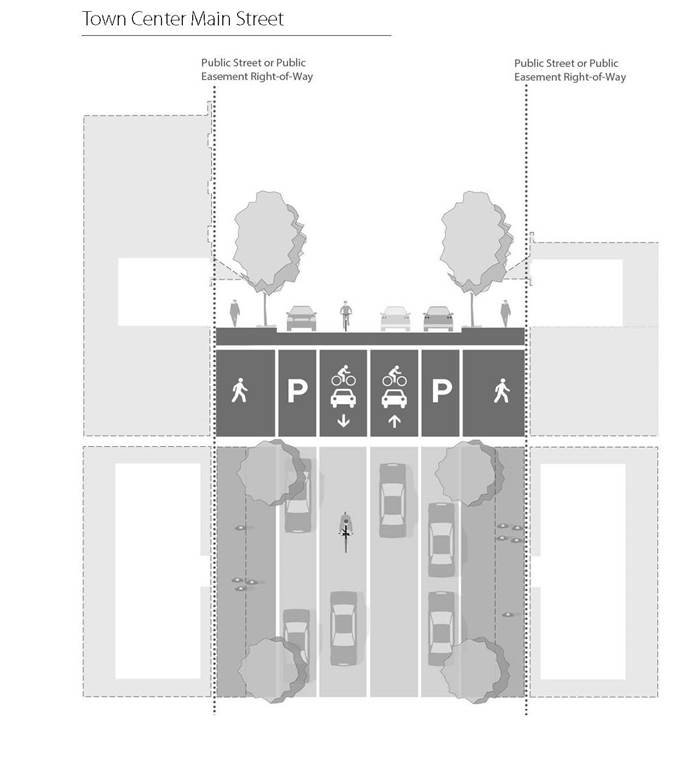
Figure 235-3: Town Center Local Street
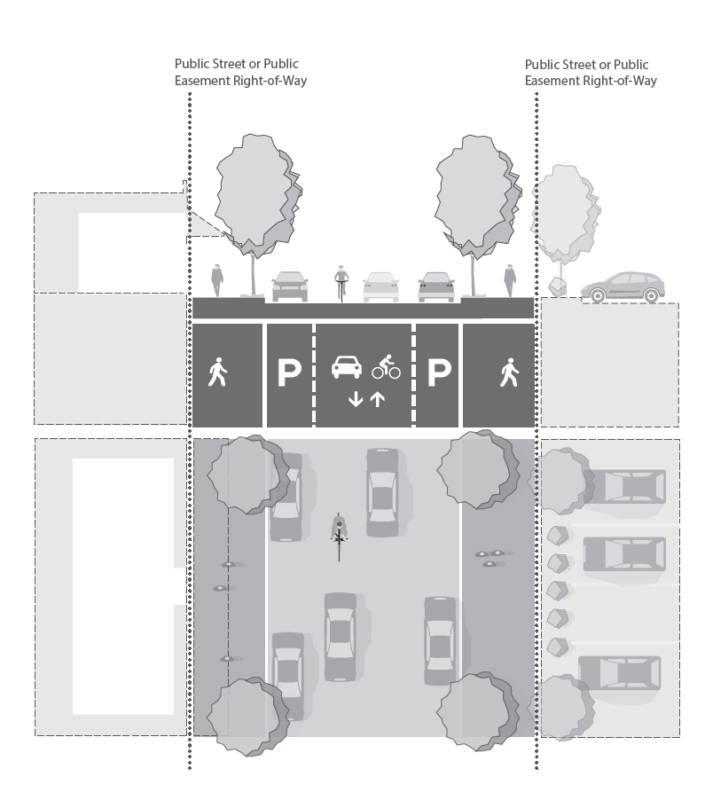
Figure 235-4: Universal Street
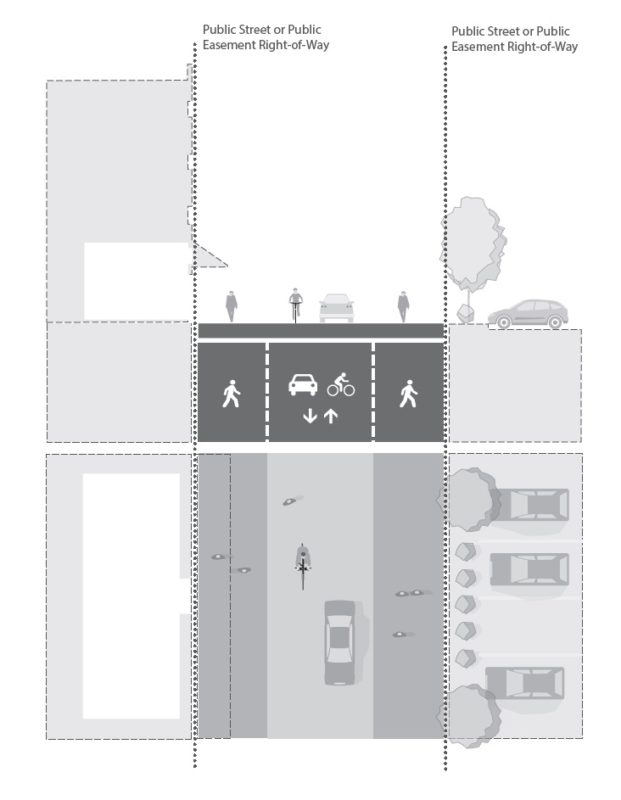
Figure 235-5: Service Street
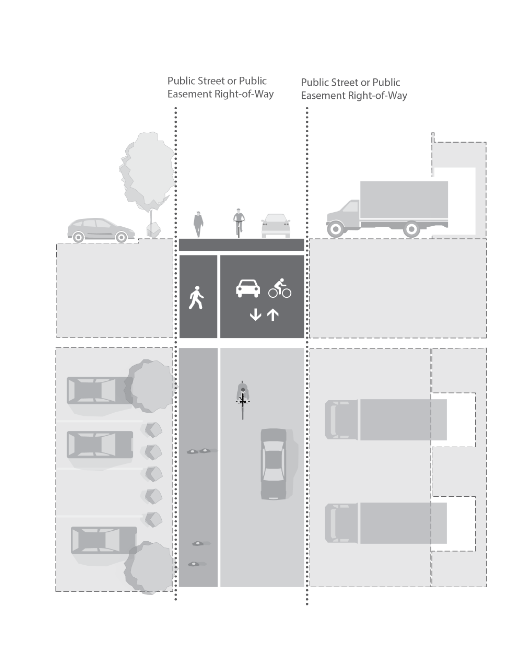
Figure 235-6: Multi-Use Path/Trail
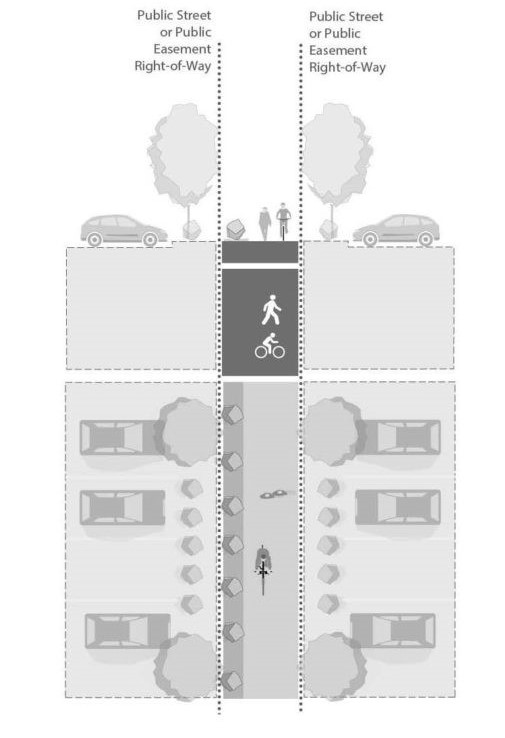
(Ord. 3-2021 § 1 (Exh. A))